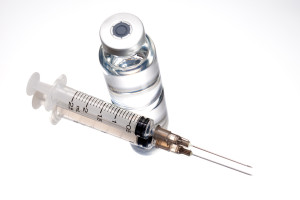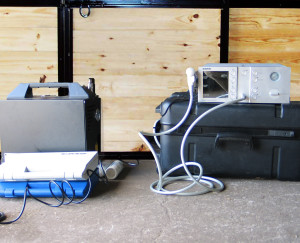NEW Withdrawal Period for Intra-articular Injections and Shock Wave Therapy in Competition Horses
By: Brittany Bevis
The end of the show season and start of the new year is often marked by many association rule changes that can involve anything from approved tack and medication usage to changes in point levels and even the creation of new classes. Of particular importance to our readers are those related to the medical treatment of horses prior to and during competition.
Recently, the United States Equestrian Federation (USEF) announced big changes to their Guidelines for Drugs and Medications as related to intra-articular [joint] injections and shock wave therapy. Implemented just three days ago, on December 1, 2014, and for the 2015 competition year, a four day withdrawal time from competition has been instituted for intra-articular injections and a three day withdrawal time from competition for shock wave therapy.
Intra-articular Injections- 4 Day Withdrawal
What does that mean for competitors belonging to breed associations that are governed by USEF policies? For some, nothing at all. If you’ve never had, and never plan to have, your horse’s joints injected or use shockwave therapy during or close to a horse show, this is a moot point. However, if you’re one of those competitors who’s made a trip to the vet the day or two before a big class to have your horse’s hocks, knee, fetlock, pastern, navicular, or coffin joints injected, those days are long gone. At least, four days gone to be specific.
Because most medication rules and regulations apply to approved and prohibited substances, some might be wondering why withdrawal times have been implemented for two practices typically considered to be “therapeutic” in nature. All that is explained within the USEF’s 2015 Guidelines for Drugs and Medications.
To begin the document, the USEF has included the following statement.
“The USEF recognizes that horses under its jurisdiction might experience competition stressors which could result in situations where legitimate, therapeutic treatment is indicated near the time of competition. Provisions of the Equine Drugs and Medications Rules address these circumstances; however, the USEF and its members mutually acknowledge that these practices should never be a substitute for good horsemanship.”
Although the “judicious use” of intra-articular injections with a “valid veterinarian-patient relationship” is considered to be appropriate treatment and can be beneficial to a horse’s health, there are situations, particularly within the competition environment, where these types of injections are used more for “maintenance.”
“There is a growing concern in the field of equine practice that intra-articular injections are less frequently used to treat a specific diagnosis and are more commonly used as a type of ‘maintenance’ therapy. Frequently, Medication Report Forms are received in the Equine Drugs and Medications Program office documenting intra-articular injections of yearlings within 24-48 hours of competing in the in-hand classes. These injections are not being performed as part of a specific treatment plan to a specific diagnosis. Additionally, the timing does not provide for a sufficient interval to allow evaluation of the response to treatment prior to returning to competition.” –USEF 2015 Guidelines for Drugs and Medications.
Furthermore, while intra-articular injections are intended to be therapeutic, concern has been raised that not all substances being injected are protective of articular cartilage and might even be damaging in some cases.
Shock Wave Therapy- 3 Day Withdrawal
When it comes to shock wave therapy, many competitors might not be aware that most racing associations prohibit the use of shock wave therapy within 5-7 days of competition. Also, the Fédération Equestre Internationale (FEI) prohibits its use within five days of competition.
In its most basic form, shock wave therapy involves a machine with a moveable wand or cord bundle that generates high intensity shock or pressure waves that are pulsed at the site of an injured area in order to stimulate and accelerate healing. Although primarily used for therapeutic purposes, the USEF indicates there is concern within the racing community about the analgesic [relief from pain] effect it provides.
According to the USEF 2015 Guidelines for Drugs and Medications, “While shock wave is a valuable tool to be used in the treatment of soft tissue injuries in horses, it can also be misused if solely used to provide analgesia close to competition and/or without a specific diagnosis.”
The rules goes further to explain that shock wave therapy may be administered by a licensed vet within the three day prohibited period, but no closer than 12 hours prior to competition, and it must be limited to the back and dorsal pelvis area. “No Shockwave Therapy is permitted within the 12 hours prior to competing.”
Just to recap, these new rules aren’t prohibiting the use of intra-articular injections and shock wave therapy outright, just be sure to adhere to the four day and three day competition withdrawal times.
For more information about the USEF Drugs and Medications Program, visit: https://www.usef.org/_IFrames/Drugs/Default.aspx













